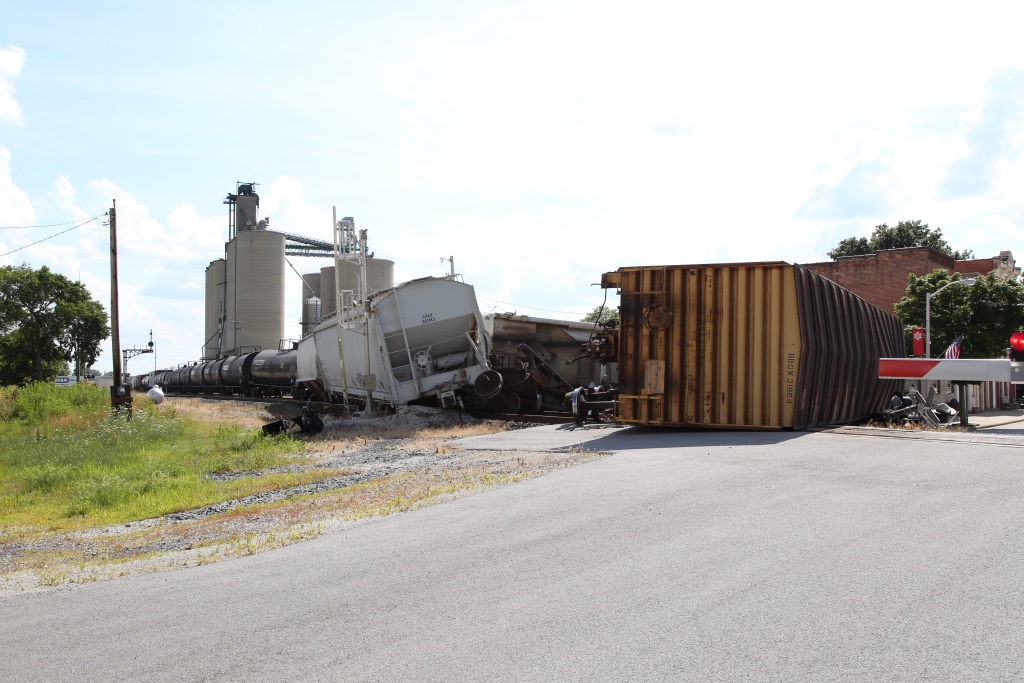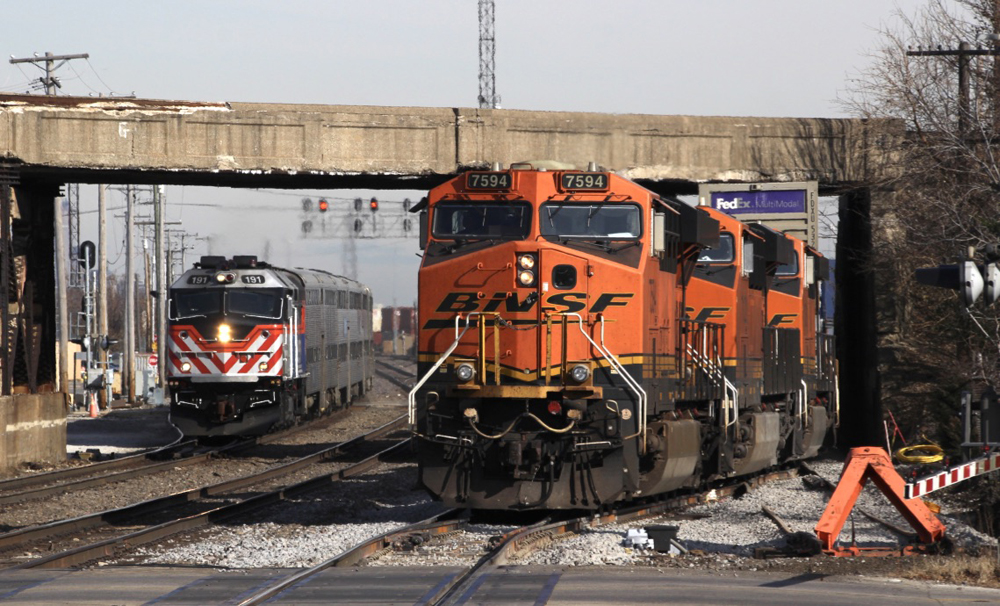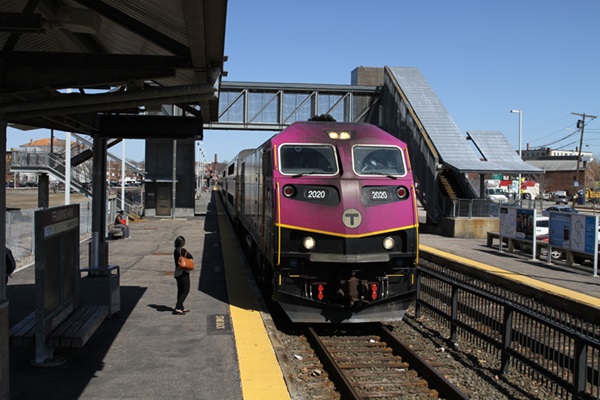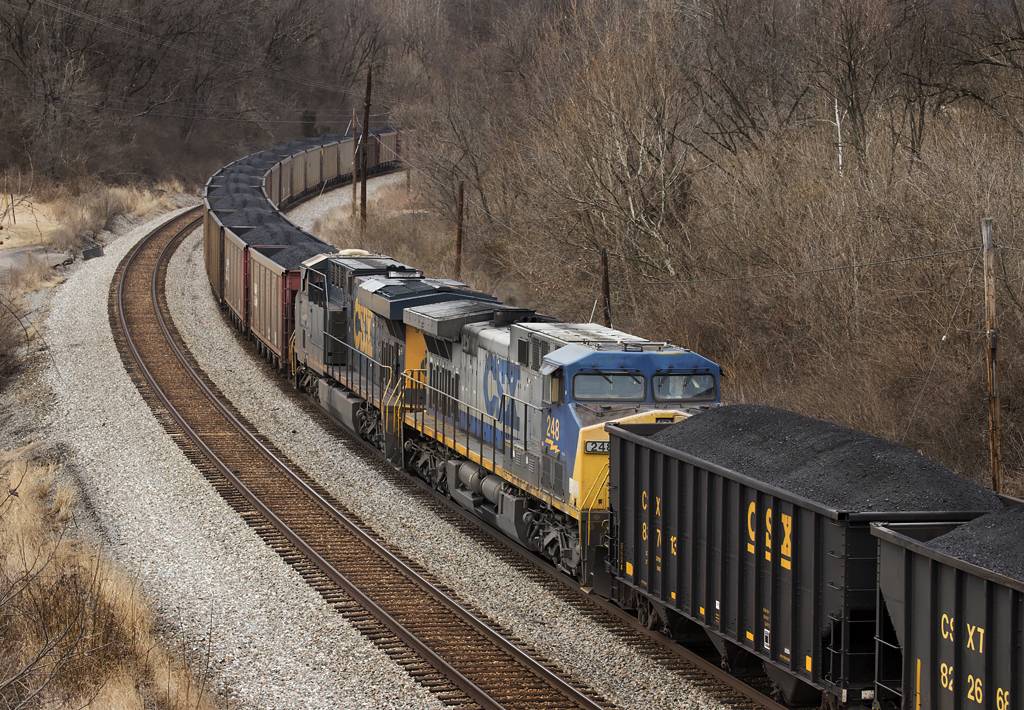The train was headed from Chicago to Toledo, Ohio, when the incident occurred.
As the train started slowing to a stop to inspect the malfunction in Tontogany, Lindsey and Oroszi noticed smoke billowing from the bearing of a boxcar about 100 feet in front of them.
“We watched as the car appeared from behind an elevator, with one of its axles throwing fire and smoke. As it hit the crossing, pavement and timber fragments began flying when the bearing failed and the car began riding the ground,” Lindsey recalls. He adds, saying that the train speed had slowed by the time more cars started to derail behind the boxcar, including three covered hoppers and two tanks cars with hazmat placarding.
Lindsey explains that shortly after watching the car derail into the streets of downtown Tontogany, he immediately called the CSX emergency number and informed the railroad police of what had just happened. The pair said that later that day, railroad officials called him to gather additional information on what they had witnessed.
No one was injured in Sunday’s derailment and it was reported that a total of six cars derailed in the incident. A signal was destroyed in the derailment and a couple of the freight cars involved narrowly missed downtown storefronts. While hazmat cars were involved in the derailment, the tank cars remained upright and no leaks were reported.
CSX spokesperson Gail Lobin tells Trains News Wire that the freight train was en route to Stanley Yard in Toledo from Chicago at time of the derailment. It was carrying 144 loads and 71 empties. Lobin says that cleanup crews were still on scene Monday and traffic was not expected to resume until Monday evening. All but one car had been re-railed as of Monday afternoon. A hopper car carrying plastic pellets did leak some of its product, Lobin confirms. The exact cause of the derailment is still under investigation.
CORRECTION: An earlier version of this story incorrectly identified the direction of the train involved in the derailment. July 12, 2016, 11:27 a.m. Central time.















215 cars on this one … over 200 cars on a train which had a derailment in downtown Fostoria earlier this year …
Seriously, CSX, isn’t running such lengthy trains, and on 28-hour headways, being penny-wise and pound-foolish?
Years ago when working for the Rock Island, a train going from Herrington to Wichita put 42 cars in a roadside park.as the engineer started bunching his train for a stop at Kechi. They found the burned-off journal 12 miles back!
At least the CPL was spared!
C S Wrecks a lot.
I can’t say how CSX does things but on the BNSF even when the detector lets you get by, it is likely the warm bearing desk is going to catch something too hot. Then the dispatcher calls and first order of business is a set and release of the brakes. If that doesn’t do it, the conductor is on the ground and inspecting. Fred Frailey might think we don’t need conductors or engineers for that matter. I am inclined to disagree.
It was L32409 and it was Northbound.
I wonder whether this was the first detector the car passed after being entrained? I also wonder whether modern detectors feed a database that leads to warning dispatchers of a second detector indication? It would be also interesting to learn about the car’s recent history. Complete burn-offs are comparatively rare, I believe, so I wonder whether the car was sitting in flood waters or was involved in another situation which compromised the seals?
the longer they run them in length, the better the pile up…
Tontogany is just NW of Bowling Green, OH. Deshler is over 20 rail-miles SSW of Tontogany.
How many 200 car trains does csx plan putting on the ground in nw ohio?